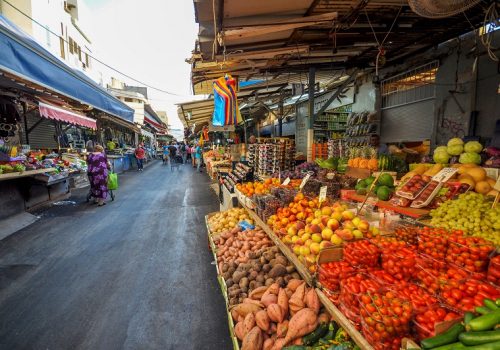We, the affiliates, tend to be lazy folks … no need to deny this 🙂 So we all look for any shortcut possible, to make campaign creation easier. However, in an attempt to save some time initially, we can sometimes actually make our lives more complicated in the long run.
An excellent example of such approach would be creating campaigns at Traffic Sources, that contain more targeting elements at once. By targeting elements I mean options like GEO, Device, OS … pretty much everything that has direct influence at the BID level.
While it’s definitely easier to select multiple targeting elements at once in a campaign, instead of setting up a separate campaign for each element, it will be a mega pain in the ass to analyze this mess later on. Not even mentioning how fatal this could be in terms of bidding – you will be overpaying like mad.
Since there are so many targeting option available these days, let me take a closer look at the most important ones and explain why it’s mandatory to make separate campaigns for each of them.
Before I move on with it, let’s set one more thing straight, we have to create campaigns at 2 “levels” : 1st level is at the traffic source, the 2nd level would be in your tracking solution. Modern trackers make it possible to split traffic according to a 1000 different rules so it is possible to send traffic from multiple traffic source campaigns to one campaign in the tracker.
For example : you can have 5 different campaigns at a traffic source, all sending traffic to 1 campaign in the tracker … then by using the rules/flows you can distribute that traffic to a dozen Landing Pages and 100 offers if you choose so.
However, I personally prefer to setup separate campaigns at the tracker too, at least for the largest targeting groups like GEO/Vertical/Source etc … Very often, I make a campaign in my tracker for every campaign I create at the traffic source. This is my approach thou, no need to follow it 100%.
Ok, let’s move on to the most important reasons for making separate campaigns at traffic sources.

1. DIFFERENT CREATIVES NEEDED? SEPARATE!
The most obvious reason for making a separate campaign is the need for different creatives. Most obvious example would be targeting different GEOs. The truth is, you can use “English” creatives in many GEOs with some success, but in 90% of cases, properly translated creatives will beat them.
You should always target 1 GEO only with your campaigns! Even in case of countries that use the same language like : Mexico, Colombia, Spain, Argentina… The reason for this is some grammar difference between Spanish in Spain and Mexico for example, but more importantly … the BID levels are very different from one GEO to the next. And usually, you can only set 1 bid for the entire campaign. This would result in a higher than necessary BID in some of the GEOs which equals to throwing money out of the window.
I already wrote a separate article on this topic, so if you want to read more about why you should start separate campaigns for every GEO, read it here.
2. DIFFERENT “ECOSYSTEM”? SEPARATE!
Not all platforms are equal! Desktops, Tablets, Smart-phones, Feature Phones, TV Browsing … all of them have some specifics that make them different from the rest. Desktops are used more for work, smartphones are more about casual browsing, tablets are somewhere in the middle. You need to think about this: what state of mind do you want the users to be in, when looking at your ads? Smartphone users could respond better to casual offers, while desktop users might be better targets for business related products.
Even different OS can determine the potential value of the user. We can safely assume that someone browsing on some device that is running the newest iOS version will be in somewhat better financial condition than a fellow surfer fighting with lags on his Android 2.0 piece of crap. You somehow expect a guy with the new iPhone 7 Plus, to have more money to spend than his $50 worth Xiaomi phone user counterpart.
And the BIDs very well reflect this, iOS traffic is usually more expensive and converts better with different type of offers. Definitely create separate campaigns at least for every major OS and at least for Desktops and Mobile devices – I split smartphones and tablets into separate campaigns too.
3. DIFFERENT CONNECTION TYPE? SEPARATE!
Right now, there are basically 2 ways of connecting to the internet – some kinda “fixed/solid” connection or mobile. For the sake of simplicity, let’s say fixed can be either some Cable or WIFI, when talking about mobile connection we pretty much always refer to a connection through your Mobile Carrier (also called 3G).
There are 2 main differences between these two :
A) Speed of connection. Wifi/cable still beats Mobile connections in most cases. This means, wifi is better for offers that require large data transfer – high end games, HD video content … Wifi/cable is also usually unlimited so that’s another plus in case of DATA heavy offers.
B) Billing options. Mobile Connection has one MEGA advantage for us affiliates, these users can get billed directly by their Mobile Operator. I’m sure you know what “premium SMS” means. There is a whole niche based around this feature called Carrier Billing Offers. I have a separate article about this HERE.
The existence of Carrier Billing has a huge impact on the BIDs, carrier traffic can be literally 10 times more expensive than Wifi in some GEOs. This is also the main reason for making separate campaigns for WIFI vs Carrier traffic.
4. DIFFERENT VERTICAL? SEPARATE!
This one is connected with point #1, but I wanted to mention it again to emphasize the need to separate campaigns in this case. These days, it’s common to test a large amount of offers, until you find something that works. And while it’s quite normal to mix verticals with traffic types like POPs, you can’t really do this with traffic types that rely on banners or text ads.
The reason is tied to bidding again – different banner/creative types have different CTRs, so you need to adjust your bids too. Various verticals also convert wildly different, so a one-size-fits-all approach is not applicable here at all. There are some verticals that can respond well to the same type of banners, but quite often it’s simply better to create a separate campaign for every vertical you plan to push.
5. DIFFERENT PLACEMENT TYPES? SEPARATE!
Point #5 refers to traffic types that rely on banners or similar creatives again. Every site or mobile app that serves banners, has several locations to place the banners in. And as expected, the performance of each spot is different.
Headers will get higher CTR compared to footers. Interstitials will have mad CTR, but large part of the clicks will be unintentional. Misleading banner placed in an In-Video spot will pull clicks like bees are attracted to honey, but the quality of such clicks will be low.
To make it more complicated, traffic coming from different spots will also respond differently to Landign Pages and offer landers… And then there are the bids, since you can only set one bid per campaign, you would pay more than needed for the footers, while your bid would most likely be too low for a prime header spot.
Definitely make separate campaigns for each spot type whenever the traffic source allows it. This also goes for various banner sizes.

LET’S SUM IT UP A BIT:
If you look at all the 5 points that I outlined, the need for separating campaigns is usually tied to BIDDING, CREATIVES and the VERTICAL… or a mix of these factors.
You can use these 3 factors as a rule of thumb, when deciding whether you are about to launch a campaign that should be split further into multiple ones.
Ask yourself :
A) Are there targets in the campaign that are likely to have significantly different bid levels?
B) Do I target several VERY unrelated verticals or product types in this campaign?
C) Do I target groups of users that are likely to respond very differently to my creatives for this campaign?
In case you answered YES to any of these 3 questions, you should split this campaign into multiple ones.
The more granular you go with the campaign setup, the more competitive you can bid and the higher your ROI can eventually become. There is no need to overdo this though, at the end of the day, there are only 24 hours in a day and you probably cannot manage hundreds of small campaigns.
Let me give you a list of parameters that I’m personally pretty much always targeting with separate campaigns :
– GEO (country) – always just 1 GEO per campaign. The only exception is when I’m trying to quickly get a feel about the traffic quality of some source. As soon as I attempt to optimize something, I target only 1 GEO per campaign.
– VERTICAL – I always target just 1 vertical/product type in a campaign. The only exception is when working with POPs traffic.
– WIFI vs Carrier Traffic – Here are no exceptions, I always target these separately.
– Mobile vs Tablet vs Desktop – Pretty much no exceptions here too. Whenever possible, I create separate campaigns for each. Many times I also split up iOS and Android.
– Spot types – I never like to mix headers with footers etc … I prefer to work with sources that offer this kind of targeting. Creative size sometimes works as the determiner here.
These are the ones I use whenever the source allows such targeting. I would strongly recommend to adapt these too, at least most of them 🙂
Thanks for reading!
[grwebform url=”https://app.getresponse.com/view_webform_v2.js?u=06z2p&webforms_id=8162402″ css=”on” center=”off” center_margin=”200″/]







2 comments
Great post Matuloo!
It’s amazing how few affiliates break up their campaigns… They set up 1 campaign then sit there and refresh their stats, wondering why the campaign is flopping.
It’s no fun having to break up campaigns like this, but it’s a requirement to be able to compete on most traffic sources!
Great article! I’m currently trying to understand affiliate marketing, really interested to start my own website. Many Thanks!